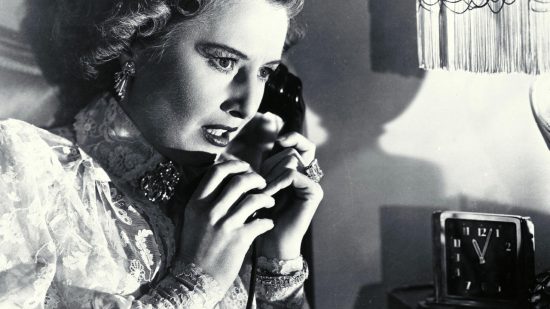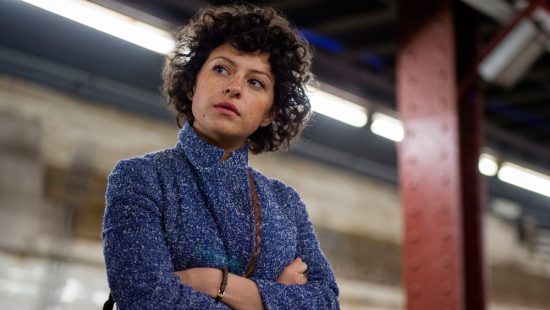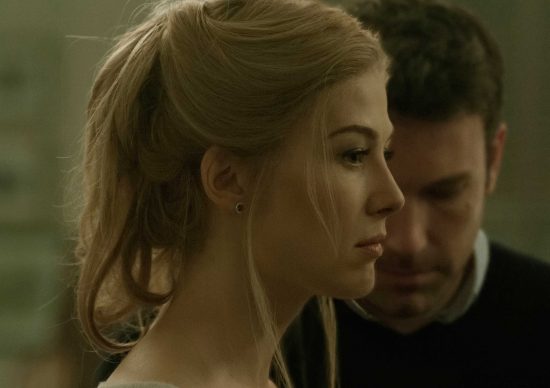Mystery: the genre putting women centre of the frame, or is it?
Mystery, a genre which from the ‘30s to the ‘90s was notable for gender tropes such as women in peril like Grace Kelly in Dial M For Murder, Barbara Stanwyck in Sorry, Wrong Number, Sheryl Lee in Twin Peaks or the female assistants / love interests (Hitchcock favourite) Grace Kelly in Rear Window and Anna Karina in Alphaville.
More recently, a new generation of female-led mysteries makes for an interesting reboot. Not only of the genre but of women’s roles from victims to complex anti-heroes. However, there seems to be a gap between mystery films and their shorter form cousins in the lands of TV and podcast series.
From Scandi Noir to Search Party dubbed by its star as ‘The hipster Columbo’: the mystery genre has been given a modern twist. Which has been good news for female actors. In these shows women are not just there to be rescued, they are out solving the mysteries, putting themselves at risk and living double lives. The genre has a feminist reboot, not only are women now front and centre of the drama, they’re as emotionally complex and interesting as their male counterpoints.
Sure, we’ve had plenty of women who solve crimes on screen before, but they too were confined to archetypes like a nosy old woman – Miss Marple, Jessica Fletcher, of Murder She Wrote or the non-nonsense, tough-talking DCI Jane Tennison in Prime Suspect.
These days we get female sleuthing with a bit more variety. Danish Noir gave us Sarah Lund (Sofie Gråbø), a woman who doesn’t just exist in the binary worlds of domesticity or professional life. She is also obsessive, androgynous and aloof. Imagine pitching that to execs in the 90s?
Aussie detective Robin Griffin (Elizabeth Moss) in Top of the Lake is given space to be vulnerable as well tough and assertive, empathetic but quick-tempered. She also struggles with the impact of personal trauma on the missing person case she’s assigned to in New Zealand.
The younger generation is on the case too. Search Party, is as much a sharp satire on millennial culture, as it as a thoroughly modern mystery. Dory (Alia Shawkat) becomes obsessed over the disappearance of a former college classmate. Her decision to find out what happened to Chantal leads her into situations that the blur the boundaries between reality and fantasy which she is not necessarily equipped to handle. She’s neither good nor bad: she’s selfish, she’s funny and narcissistic but also empathetic. Dory displays the layers of a 20 something woman that we don’t often get access to in the mystery genre, or any other genre, for that matter.
In the world of audio mysteries, we have Alice isn’t Dead and Homecoming, both of which are slated for TV adaptation. In the former, all the main characters are female. Long distance truck driver Keisha (Jasika Nicole) drives across America for her wife (Alice) who she had presumed was dead. Her drive takes her through abandoned towns, puts her in the line of inhuman killers and a conspiracy she has found herself at the centre of. She does all of this while apparently dealing with an anxiety disorder. It shares some of the DNA of Twin Peaks, but it’s a lot more feminist.
It’s original, it’s woke, and it’s incredibly creepy. Interestingly too, one of the biggest threats to Keisha is another woman, who is every bit as scary as any male villain. Meanwhile, psycho-thriller / mystery Homecoming plays with the audience’s perception of Heidi (Catherine Keener) as a therapist working with veteran Walter (Oscar Isaac) on a government programme designed to adjust them to civilian.
As the narrative unravels through non-linear episodes, Heidi’s role veers between rule-breaking empath, to someone with a darker agenda and possible scapegoat.
Although Homecoming is more of a thriller than a mystery, it brings a modern twist to old narrative beats. The audience is left trying to piece together the elements through snapshots of exposition (creator Eli Horowitz cites the original radio play of Sorry, Wrong Number as an influence) and the shifting perspectives of the main players.
But film has left a mark on some modern TV series. Fargo was inspired by the original film. Even though the stories have changed, it’s easy to see character similarities between Francis McDormand’s Oscar-winning performance as the ultra polite and brilliantly-minded Chief of Police Marge Gunderson and the quietly fearless, softly spoken Molly Solverson (Allison Tolman).
More than 20 years on from Marge Gunderson, what other mystery leading women are have there been?
Big box office offerings include the divisive thriller (or “postmodern mystery” as critic Ted Gioia calls it) Gone Girl, that plays with mystery genre tropes like unreliable narration and heightened suspense throughout. Despite its success, critics and fans alike are divided over victim/perpetrator complex. David Fincher and Gillian Flynn dare us to see its central characters as both.
The success of Gone Girl paved the way for the less successful, clunky adaptation Girl on the Train. For all the film’s many flaws (including underdeveloped supporting characters), the source material did provide an interesting and complex lead character in Rachel Watson (Emily Blunt) whose alcoholism is a catalyst for drama, rather than the sum total of who she is.
Both films had to deal with the shadow of how women are viewed. Emily Blunt was deemed “too attractive” to play an alcoholic. Then there’s the gender politics of ‘Team Nick’ and ‘Team Amy’ among Gone Girl fans.
Another big player is the US remake of The Girl With the Dragon Tattoo, where the titular ‘Girl’, gothy hacker-turned investigator Lisbeth Salander seemed to be overshadowed by Daniel Craig as the main star opposite the lesser known Rooney Mara. In fact, the search for the right Lisbeth took a lot longer than casting the role of the male journalist.
Film still relies heavily on star power. In the past mystery genre films had the world’s biggest stars screaming, running and gasping for our entertainment. Now, it’s a genre that might not be the bums-on-seats draw as say a rom-com or a superhero franchise. Perhaps that’s why women are still struggling to get the same kind of roles as they’re landing in TV and radio drama.
It could also be about money; Matt Damon lamented the loss of the mid-budget movie in an interview with the Metro “ The $15 to $60 million drama, is gone. They just don’t make that movie anymore.” he said.
Another possibility is that episodic series can experiment more with form, and spend more time developing complex characters than films.
The popularity of the genre means there is potential to create even more compelling female characters. Whether film can replicate what TV and podcasts are doing remains unsolved, but there is definitely a case to answer.
Check out my website and you can also follow me on Twitter.












